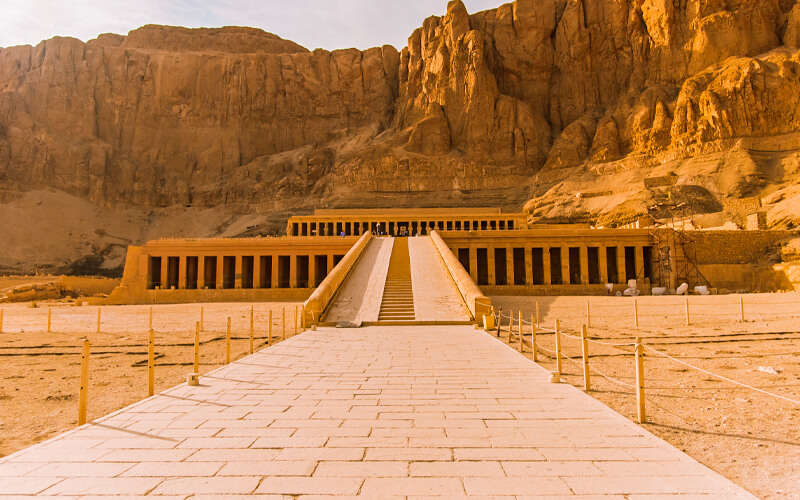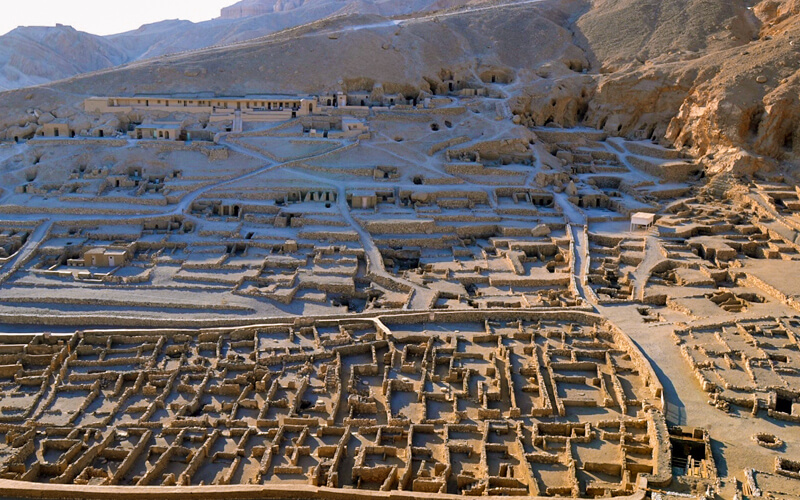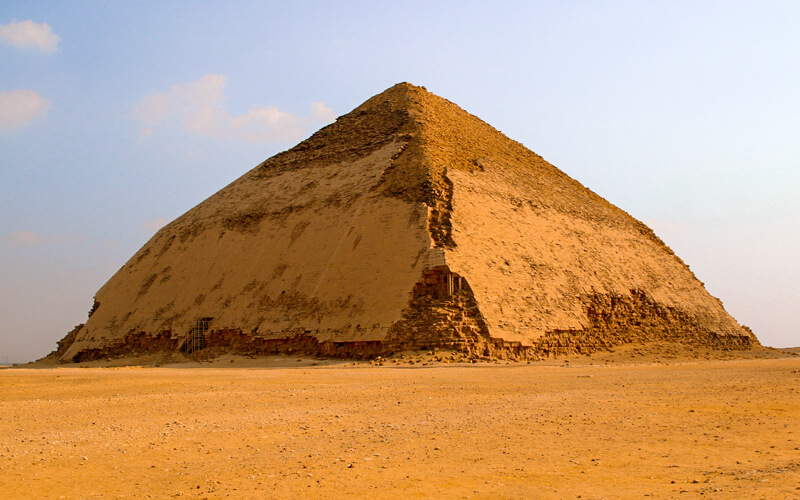Hatshepsut Temple
Hatshepsut temple Facts
There’s more to the story than the mesmerizing Hatshepsut Temple.
This extraordinarily gorgeous Hatshepsut temple, also known as Djoser-Djeseru, was constructed for the Eighteenth Dynasty “Pharaoh Queen Hatshepsut” and is one of the most important archeological sites in Egypt. It is one of the outstanding temples of ancient Egypt, and it is widely regarded as one of the finest accomplishments of the ancient Egyptian civilization. Hatshepsut and Amun are commemorated on this monument. The Egyptian monarch was tasked with the responsibility of honoring their gods and pharaohs, as well as preserving their legacy till the end of time via the building of temples and tombs. Queen Hatshepsut was constantly on the lookout for methods to improve her public image while also immortalizing her name, and the Mortuary Temple served to accomplish both goals. It is because she was the daughter of an extremely powerful deity in Egypt that she reigned in the manner of a man. She was in power for about two decades.
Description of Queen Hatshepsut’s reign
Queen Hatshepsut was the daughter of King Thutmose I and his wife Ahmose, and the granddaughter of King Thutmose II. Thutmose I obtained a son from Mutnofret via a subsequent marriage, and this son is known as “Thutmose II.” Hatshepsut married Thutmose II when she was just 20 years old, as had been customary. Queen Hatshepsut was exalted to the prestigious position of the wife of the god Amun, which is the highest status a woman may achieve in Egypt and which gives her a powerful political role in the country. Because her husband died when their son was still a toddler, she was able to maintain influence over the operations of the kingdom until she was crowned Pharaoh.
Her reign was the most peaceful and wealthy in Egypt’s history, and she is remembered as such. She is distinguished for her excellent commerce and economics, as well as her many public works projects, which offered employment for employees from all over the country.
Hatshepsut Temple’s Geographical Location
Located in Upper Egypt beneath the cliffs of “Deir El-Bahari,” a name that derives from the former monastery built during the Coptic era, Queen Hatshepsut temple is about 17 miles northwest of Luxor on the west bank of the Nile in western Thebes, which was the great capital of Egypt during the New Kingdom. The temple is dedicated to the goddess Hatshepsut. It is located just across the street from the Mortuary Temple of Mentuhotep II. On your luxury Egypt excursions, you may stop here to see the Valley of the Kings, which is a must-see destination.
The Architecture of the Hatshepsut Temple
In 1479 B.C., Queen Hatshepsut granted the order for the construction of this beautiful temple. She constructed the temple to chronicle the tale of her life, and it took around fifteen years to complete. Senenmut, Hatshepsut’s chief organizer, was responsible for the design of the temple. He meticulously created it in the style of the Temple of Mentuhotep II, but he enlarged every feature of it to monumental proportions. All three floors of the temple correctly depict the colonnade that is shown on the outside of the temple.
In Hatshepsut’s trips to Punt, a garden with exotic plants was planted on the ground level, but sadly, the garden has been demolished. There were colonnades with square pillars beyond the courtyard, which added to the atmosphere. Decorated images include Tuthmosis III dancing in front of Amun and scenes showing the wetlands of Lower Egypt, among other things. It is possible to pass through archways that will take you to the second level.
A road leading to another ramp was lined with two reflecting ponds and two sphinxes on the Second Level, which was a beautiful sight. It features one of the first examples of a visual record of a commercial voyage. Additionally, a temple dedicated to the Goddess Hathor, who is represented with a woman’s face and cow’s ears while holding a musical instrument, may be found here. The birth colonnade, which is located on the right side of the ramp and tells the story of Hatshepsut’s creation with Amun, and the punt colonnade, which is located on the left side of the ramp and tells the story of her glorious expedition to the mysterious ‘Land of the Gods,’ which the Egyptians had not visited in centuries, are both on the right side of the ramp. The Hathor Chapel, which has a hypostyle hall with twelve gorgeous Hathor-headed columns, and the Anubis Chapel, which has a hypostyle hall with twelve fluted columns and an astronomical roof, are both noteworthy.
At the entrance to the Third Level is a portico with two rows of columns that face the front of the building. It has been decreed that all pictures of Queen Hatshepsut be destroyed and that all representations of King Tuthmosis III be replaced. In addition, there is the Amun sanctuary, which is located beyond the courtyard. During the Ptolemaic dynasty, it was renovated and rededicated to Imhotep, the god of war.
What Has Been the Historical Influence of the Temple of Hatshepsut
This magnificent temple is often regarded as the most authentic representation of ancient Egyptian history. There are shrines to worship the gods that are vital to her afterlife, and it elevates the pharaoh’s position. The building of this temple is modeled on the construction of the temples that will follow in the new kingdom.
At the Hatshepsut Temple, you may see a variety of things.
Even though certain portions of this magnificent ancient monument have been destroyed as a result of vandalism, many visitors on Egypt tour packages have said that the site is well-preserved and well worth seeing. A series of gigantic terraces, joined by ramps, form the base of this magnificent temple. It is open from 6 a.m. to 5 p.m., seven days a week. There is a bazaar (or marketplace) located immediately outside of the property’s main entrance, which sells a variety of items. The Birth colonnade and the Punt colonnade, the Hathor chapel and the Anubis chapel, as well as the sanctuary of Amun, may all be found inside this magnificent temple.
If you want to spend a fantastic vacation check out our amazing Egypt Vacation packages or Luxor Excursions to find the best way to travel to Egypt for you.



